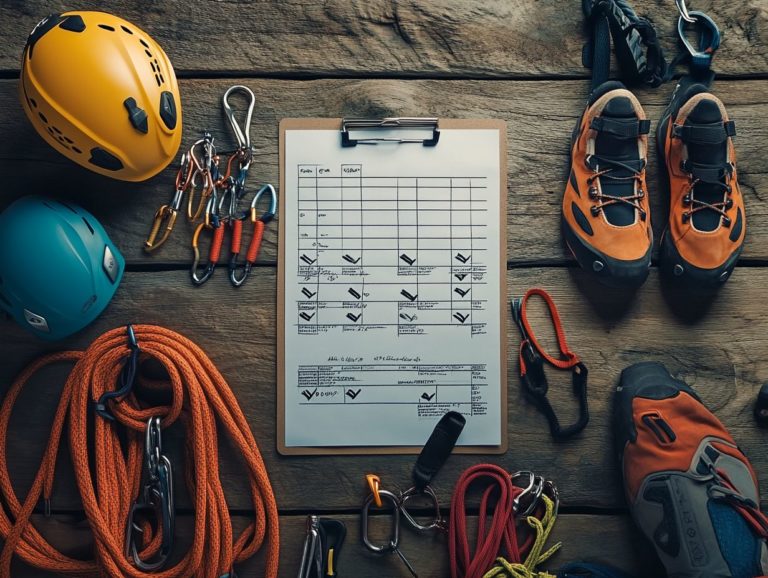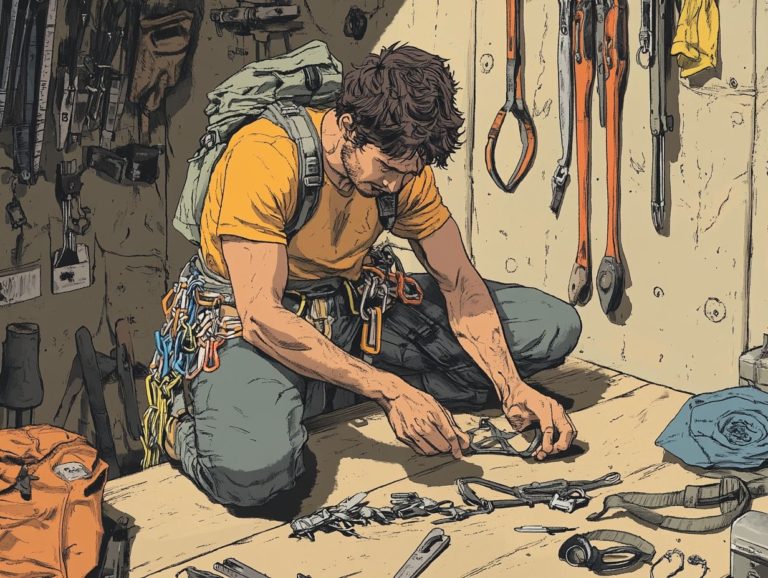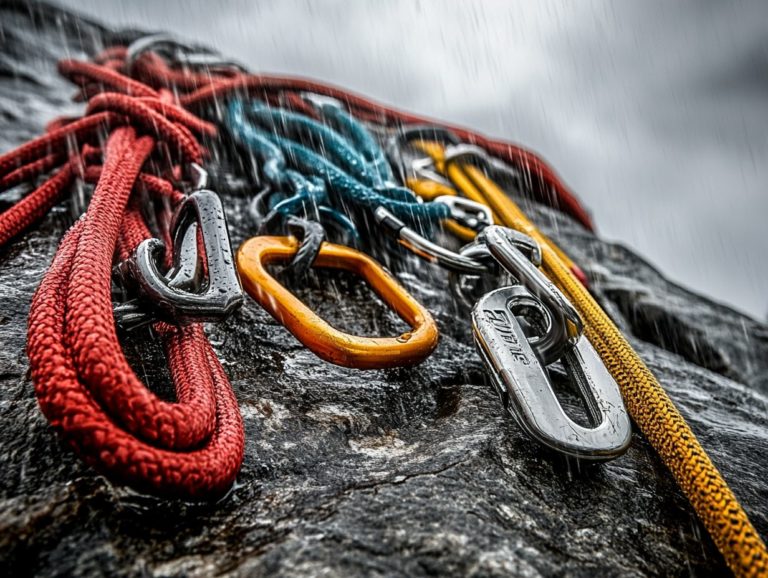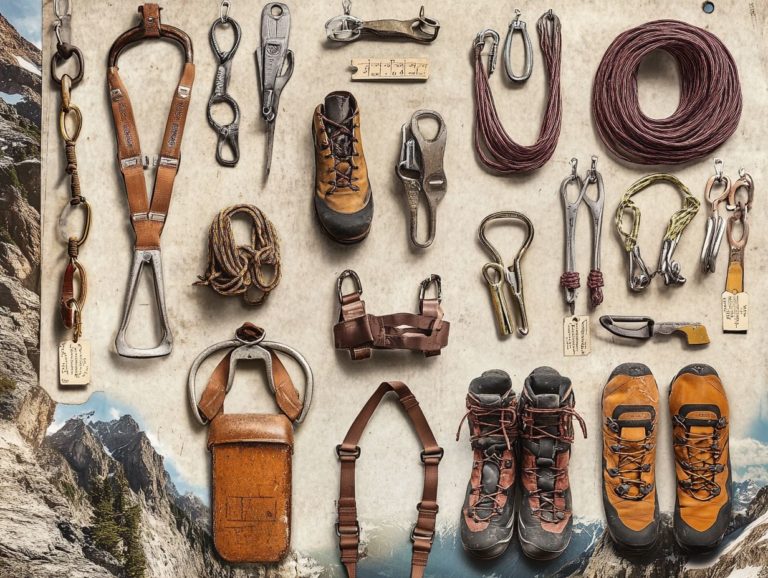How to Use a Climbing Belay Device
Climbing is undeniably exhilarating, yet it carries distinct safety responsibilities, especially when it comes to belaying. A belay device is an essential tool in your climbing arsenal, designed to manage the rope effectively and ensure your safety throughout the climb.
This guide delves into the various types of belay devices, their key components, and the proper techniques for use. It emphasizes important safety precautions and outlines common mistakes to steer clear of. Whether you’re starting out or seeking to hone your skills, you’ll find valuable insights tailored for every level of expertise.
Contents
- Key Takeaways:
- Types of Belay Devices
- Basic Components and Features
- Proper Usage and Techniques
- Safety Precautions and Tips
- Common Mistakes and How to Avoid Them
- Frequently Asked Questions
- What is a climbing belay device?
- How do I attach a climbing belay device to my harness?
- What is the proper way to hold a climbing belay device and ensure climbing safety?
- How do I use a climbing belay device to lower a climber?
- Can I use a climbing belay device for top-rope and lead climbing?
- How do I properly care for and maintain my climbing belay device?
Key Takeaways:
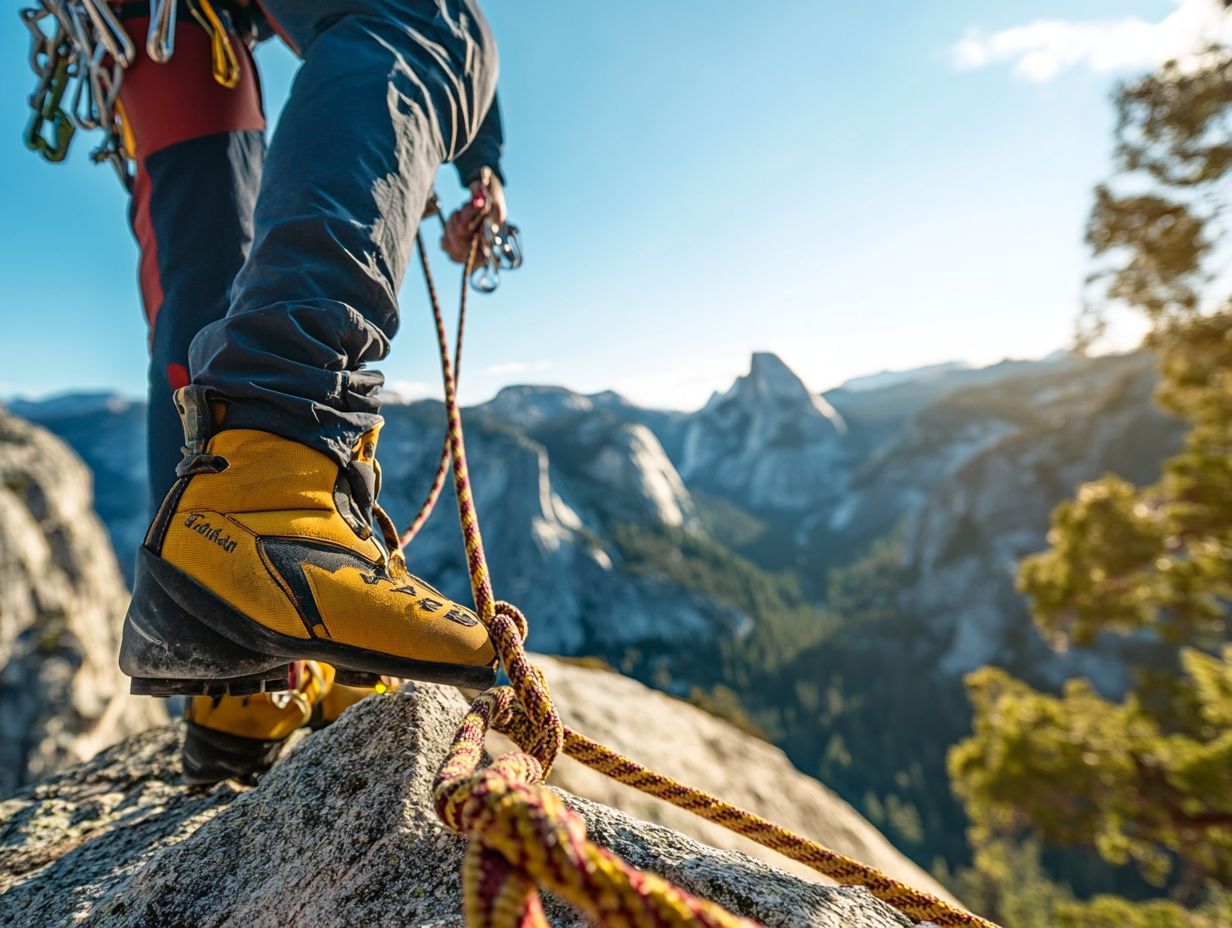
- Always properly inspect and understand your belay device before use to ensure safe usage.
- Ensure you and your partner have clear communication and proper hand positions before belaying to avoid mishaps.
- Practice safety precautions, like using a backup or double-checking knots, to prevent accidents and ensure a successful climb.
What is a Belay Device and Why is it Important?
A belay device is not just an accessory; it’s an essential piece of climbing gear that plays a pivotal role in your safety while scaling heights. Devices like the Black Diamond ATC, DMM Pivot, and Petzl Reverso help manage rope tension and control a climber’s fall during various climbing scenarios.
With features like auto-locking mechanisms devices that automatically lock the rope to prevent falls they enhance belaying techniques and make your vertical adventures as safe as possible. It’s crucial to understand how your belay device works. This knowledge directly impacts your climbing safety precautions and techniques.
Different types of belay devices offer unique advantages for specific climbing situations. For example, the Petzl Grigri features a camming mechanism that automatically locks the rope during a fall, providing an extra layer of security for less experienced climbers. In contrast, the DMM Pivot’s design allows for smooth and controlled rope feeding, vital for effectively belaying lead climbers.
The mechanics of each device play a key role in fall management and lowering procedures, making proper usage essential in vertical rope work. Familiarizing yourself with these tools boosts your confidence and promotes safer climbing practices. Dive into the details of each device to boost your climbing confidence and safety!
Types of Belay Devices
Belay devices come in various types, each meticulously crafted to suit particular climbing scenarios and personal preferences. These devices incorporate features that enhance your climbing safety and improve overall efficiency on the rock face.
Different Designs and Uses
You ll find a variety of belay devices on the market, including tubular devices and guide mode devices. Each is tailored for unique climbing techniques and designed to enhance safety with features like auto-locking mechanisms.
Tubular devices, for example, are often favored for their simplicity and versatility, making them perfect for traditional climbing where adaptability in belaying and rappelling is essential. In contrast, assisted braking devices automatically engage to catch falls more efficiently, particularly useful in sport climbing scenarios.
Guide mode devices allow you to belay multiple climbers with ease, streamlining group dynamics. When paired with locking carabiners, these devices create an extra safety net, ensuring that your climbing experience is not only safer but also more efficient. Choosing the right belay device for your climbing context is essential for every adventurer.
Basic Components and Features
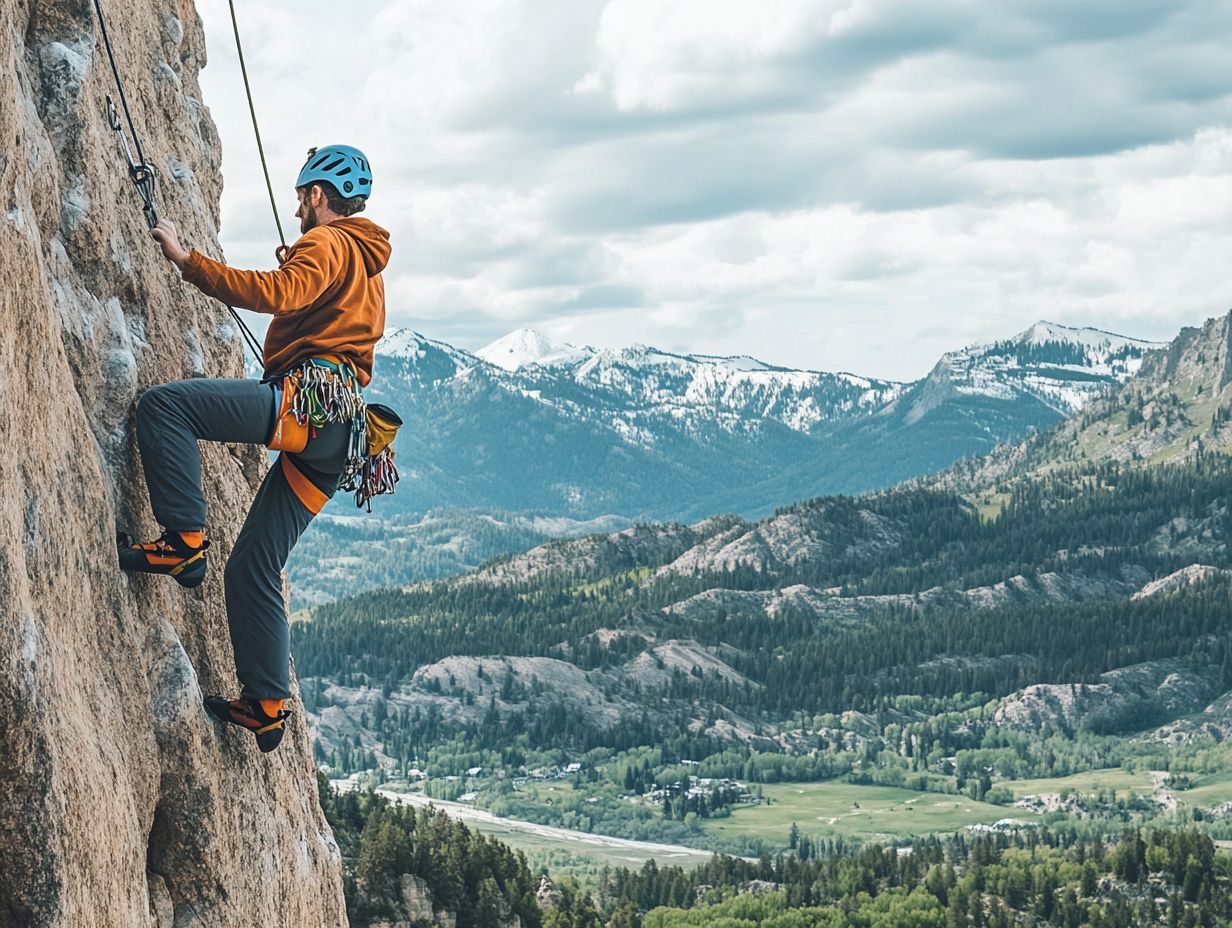
Grasping the fundamental components and features of a belay device is crucial for you as a climber. These elements play a direct role in the belaying process and significantly impact your overall climbing safety.
Understanding the Parts of a Belay Device
Each part of a belay device is crucial for climbing safety. This includes the body and the part that slows you down.
The body is usually made of tough materials like aluminum or stainless steel. It’s built to handle strong forces during your climbs.
The braking part comes in various designs and controls how fast you descend. Regularly check every part for wear and tear, especially the rope path.
Debris can affect performance. Cleaning your belay device prevents grit buildup and ensures smooth operation.
Make sure the carabiners are aligned and locked during use. This can help avoid accidental disengagement and boost your climbing safety.
Proper Usage and Techniques
Mastering how to use a belay device is vital for climbers. It ensures safety and efficiency as you climb.
Step-by-Step Instructions for Using a Belay Device
Follow clear, step-by-step instructions to ensure safe belaying. This approach not only keeps you safe but also builds your confidence.
Understand how to use the belay device to protect both you and the climber. Start with the correct setup, checking its orientation and connection to your harness.
Practice the brake hand technique for a steady grip while managing slack. Regularly practice communication signals with your climbing partner to reduce risks.
Be ready for unexpected situations like a fall or miscommunication. Adaptability ensures safety and keeps the climbing experience enjoyable.
Safety Precautions and Tips
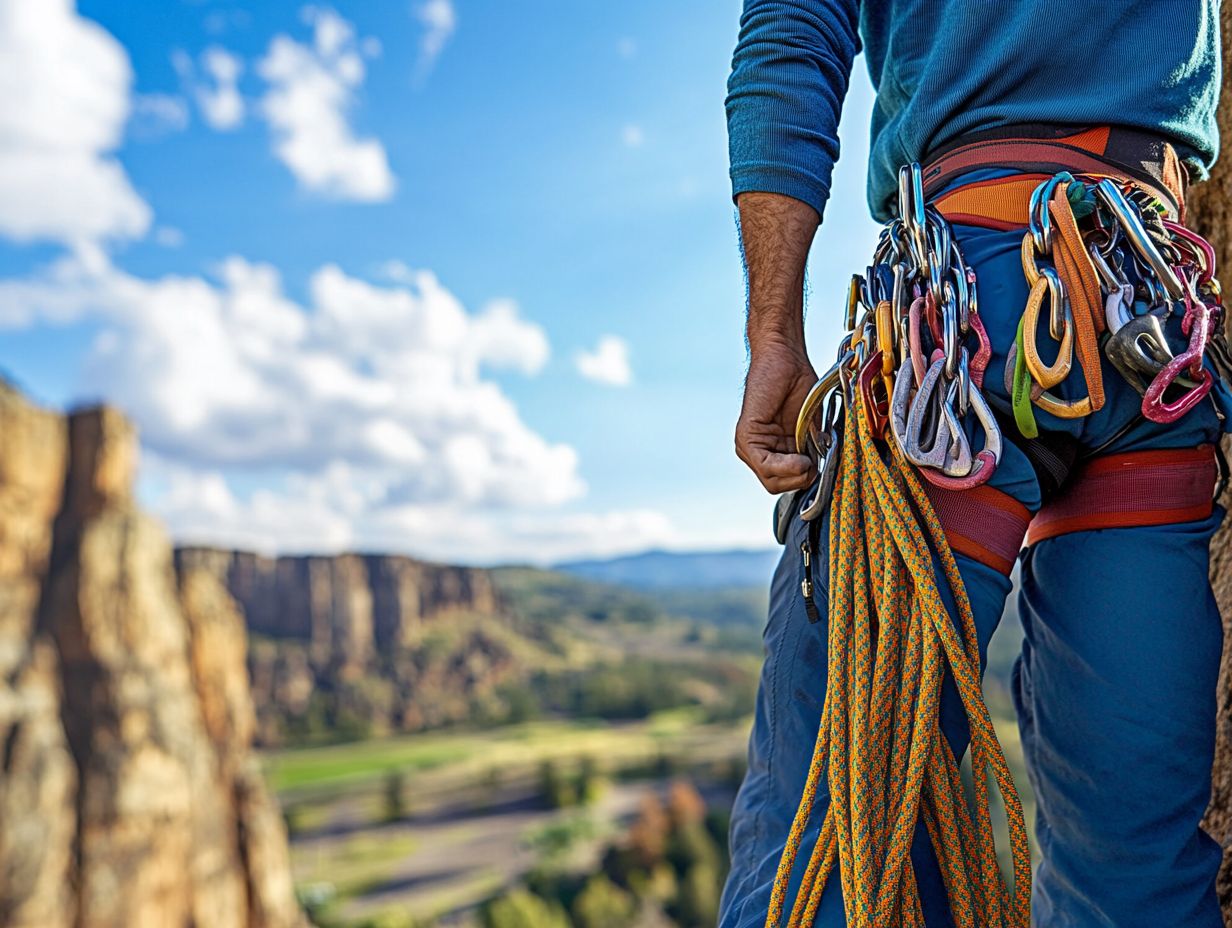
Prioritize safety precautions to reduce risks associated with climbing. A proactive safety approach builds your confidence.
Important Considerations for Safe Belaying
Important factors for safe belaying include your weight, the rope s diameter, and the specific belay device you choose. Your weight influences the force on the belay system during a fall.
The rope s diameter matters, too. A thicker rope may require a specific device to ensure the right amount of friction.
Considering these factors boosts safety and effectiveness, giving peace of mind to you and your climbing partner.
Common Mistakes and How to Avoid Them
Be aware of common belaying mistakes. This knowledge helps you avoid accidents and enhances your overall climbing safety.
Tips for Preventing Accidents and Errors
Effective safety tips are crucial for climbers. They help reduce risks and prevent accidents when using a rappel device.
Mastering belaying techniques and effective communication greatly enhances your safety while climbing. Always double-check your setup to ensure that knots are tied correctly and harnesses are securely fastened.
Always maintain eye contact with your climber! This vital connection helps you respond quickly to sudden movements or falls.
Practicing these procedures boosts your confidence and fosters a safety culture in the climbing community, allowing everyone to enjoy climbing while minimizing potential hazards.
Frequently Asked Questions
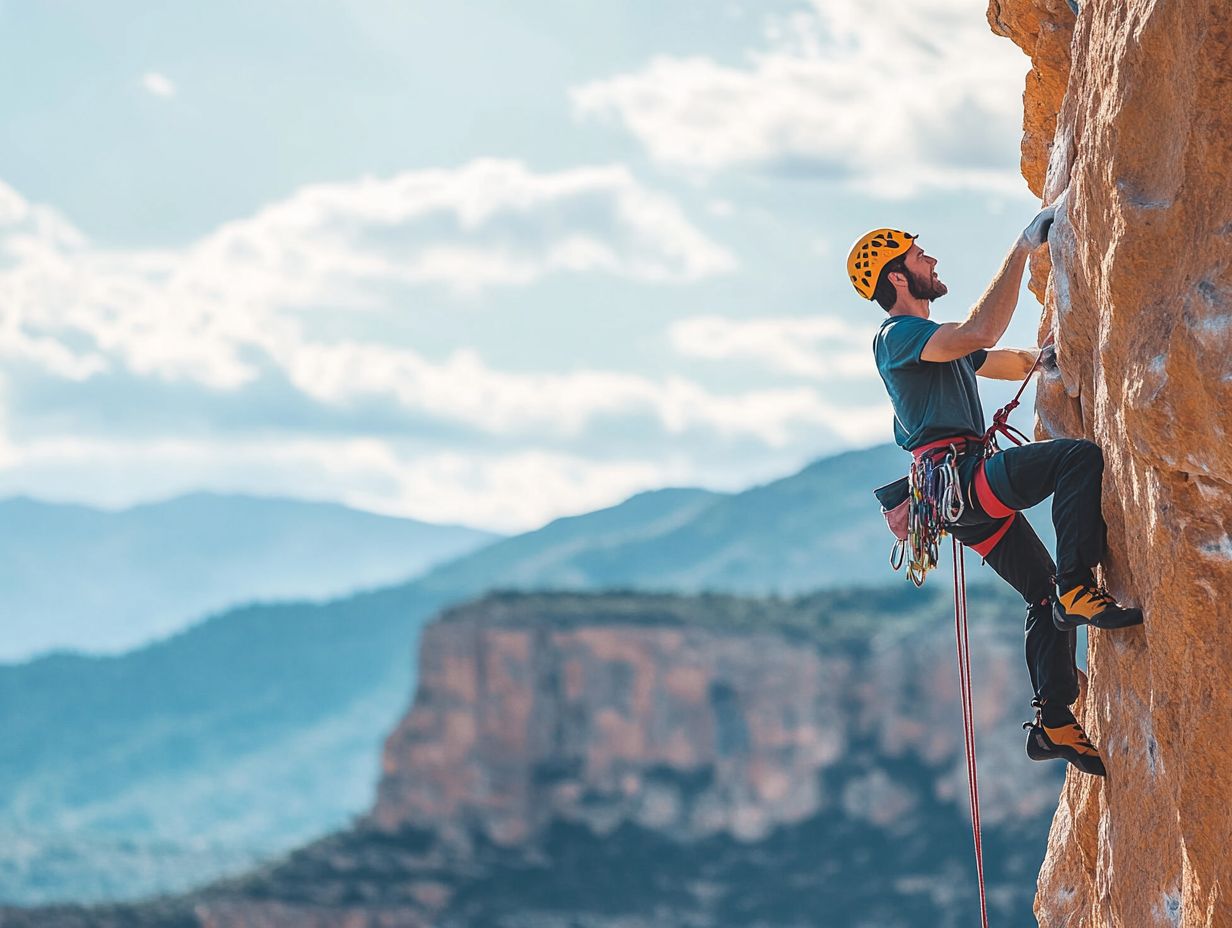
What is a climbing belay device?
A climbing belay device is a piece of equipment used in rock climbing to control the rope and protect the climber in case of a fall.
How do I attach a climbing belay device to my harness?
To attach a belay device to your harness, loop the rope around the belay loop on your harness and then thread it through the device according to the manufacturer’s instructions.
What is the proper way to hold a climbing belay device and ensure climbing safety?
The proper way to hold a belay device is with your brake hand (the hand controlling the rope) below the device and your guide hand (the hand feeding the rope) above the device.
How do I use a climbing belay device to lower a climber?
To lower a climber, slowly release the rope with your brake hand while maintaining a firm grip on the rope with your guide hand. Make sure to communicate clearly with the climber and keep your brake hand on the rope at all times.
Can I use a climbing belay device for top-rope and lead climbing?
Yes, most belay devices are designed to be used for both top-rope and lead climbing. However, it is important to always check the manufacturer’s instructions and recommendations before use.
How do I properly care for and maintain my climbing belay device?
To ensure the safety and longevity of your belay device, it is important to regularly inspect it for any signs of wear and tear. Keep it clean and free of dirt and debris, and always follow the manufacturer’s instructions for proper use and storage.

